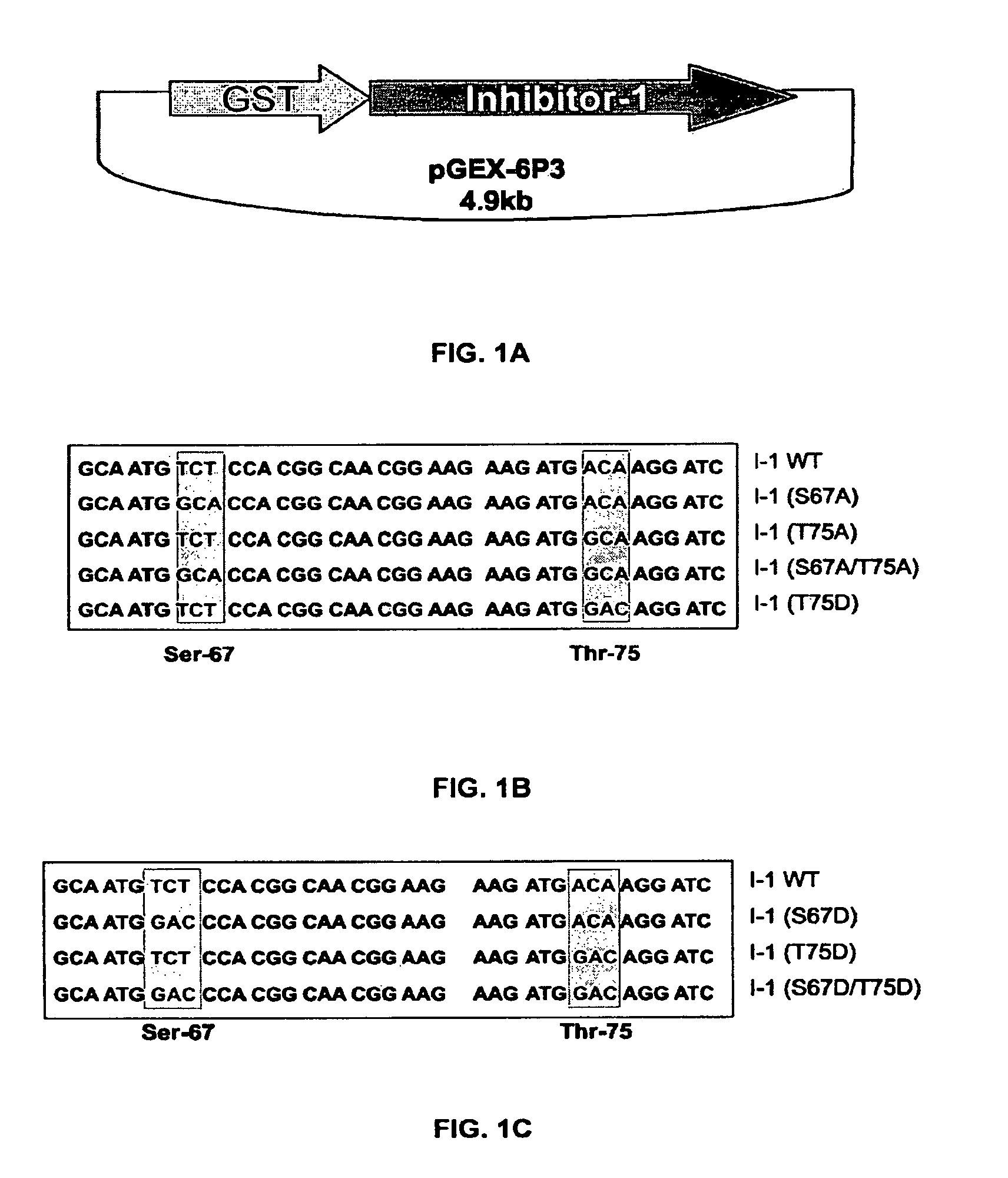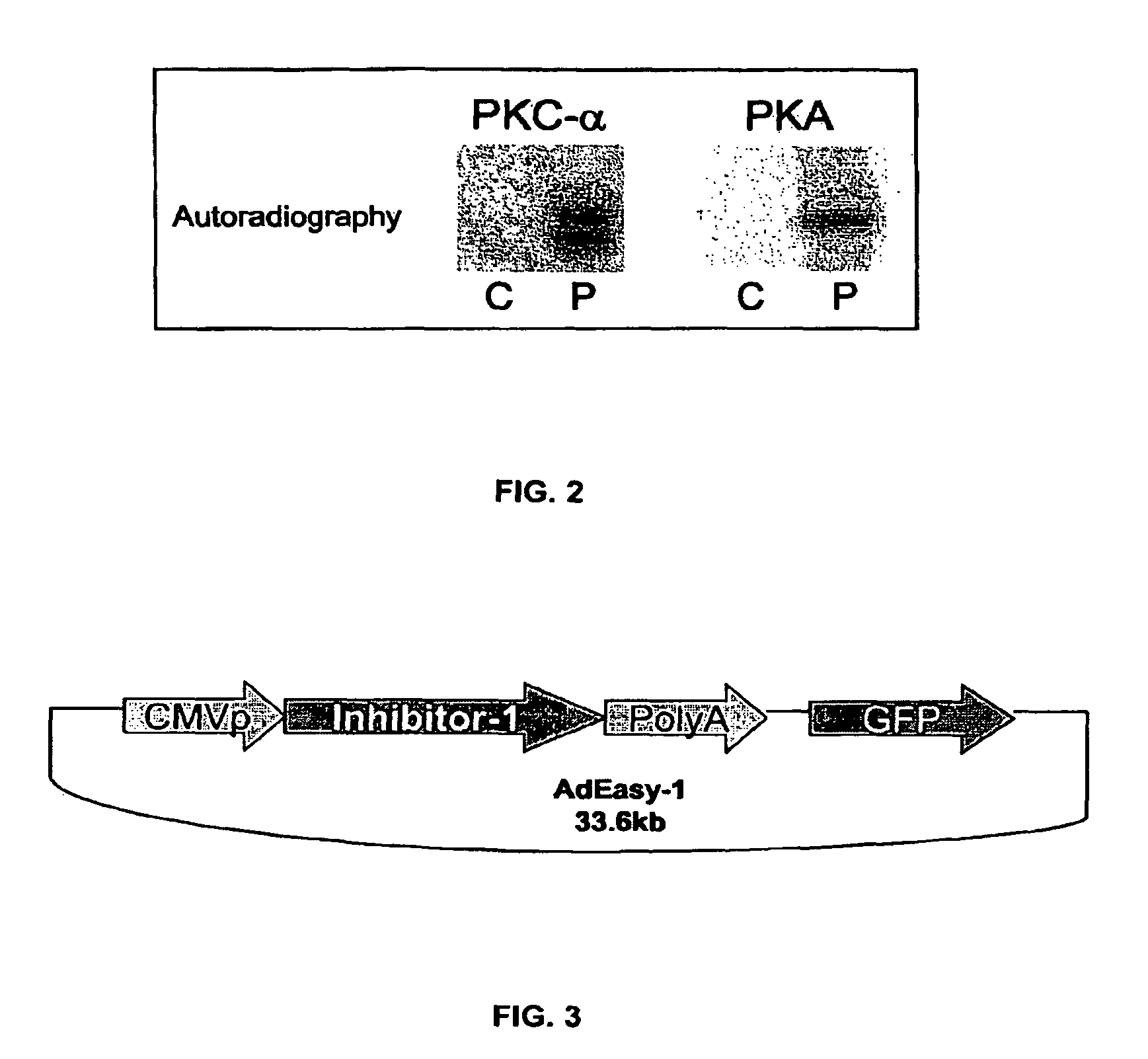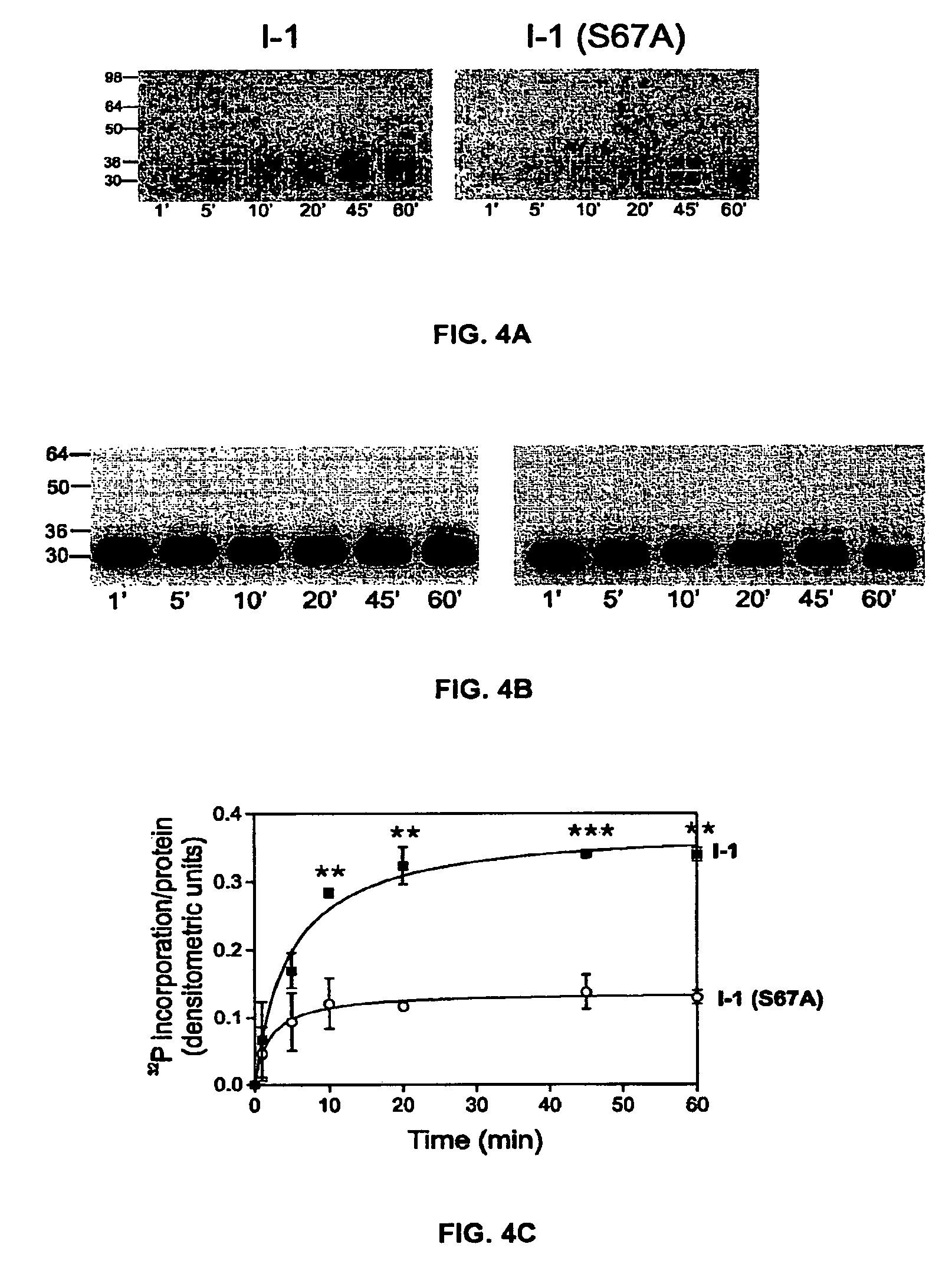Phosphatase inhibitor protein-1 as a regulator of cardiac function
a phosphatase inhibitor and protein technology, applied in the direction of cardiovascular disorders, peptides, drug compositions, etc., can solve the problems of heart failure to the rest of the body, inability to detect any inhibition of pp-1 activity, and insufficient human resources, so as to improve the end-systolic pressure dimension relationship, accelerate calcium signal decay, and reduce the time constant for relaxation
- Summary
- Abstract
- Description
- Claims
- Application Information
AI Technical Summary
Benefits of technology
Problems solved by technology
Method used
Image
Examples
example 1
Phosphorylation of I-1 and I-1 Mutants by PKC-α
[0177]As noted, previous work showed that PKC-α phosphorylates inhibitor-1 (I-1) at Ser-67. To examine whether additional PKC-α phosphorylation sites may exist on I-1, an I-1 mutant in which Ser-67 was substituted with alanine was phosphorylated in vitro by PKC-α as described above. FIG. 4A shows that although PKC-α phosphorylation of the mutant I-1 (S67A) is greatly decreased in comparison to wild type I-1, it is not completely abolished. Densitometric analysis of 32P-incorporated per protein revealed that at steady-sate (20-45 min), I-1 (S67A) incorporated 40±8.6% of the radioactivity levels present in wild types (100%) (FIG. 4C). In some of the experiments, a single additional band appeared at 78 Kda, which correspond to PKC-α autophosphorylation. No other radioactive bands were detected in any of the experiments. A specific antibody (AC1, 1:1000) recognized the phospho-bands as inhibitor-1 (FIG. 4B). Thus, these results indicate tha...
example 2
Phosphorylation Site Determination
[0178]To determine the location of the additional PKC-α site (s) on I-1, recombinant purified I-1 was purified and subjected to in vitro phosphorylation by PKC-α in the presence of [γ-32P] ATP. The 32P-labeled I-1 was purified by SDS-PAGE, and digested with trypsin. After purification of the tryptic peptides by reverse-phase HPLC, two peaks, 50 and 51 (FIG. 5A), contained 62% of the radioactivity eluting from the Vydac column. Both fractions were subjected to MALDI-TOF mass spectrometry analysis. Mass matching analysis from fraction 51 yielded three potential phosphorylated peptides. The detected masses (predicted mass plus phosphate group) were 1226.44, 1494.45, and 1572.68 Da, which corresponded to each of the following I-1 sequences: 62STLAMSPRQR71 (SEQ ID NO: 31), 72KKMTRITPTMK82 (SEQ ID NO: 23), and 135KTAECIPKTHER146 (SEQ ID NO: 32) (data not shown). In parallel, analysis of peak 50 detected a peptide of mass 1366.46 Da, which corresponded to ...
example 3
Analysis of PKC-α Phosphorylation of I-1 by Two-Dimensional Electrophoresis
[0182]To further corroborate the autoradiography results, 2-D gel electrophoresis analysis was used to detect possible mobility changes in I-1 due to PKC-α phosphorylation. 2-D gel electrophoresis separates proteins based on both their isoelectric point (pI) and molecular weight. Phosphorylation causes the pI value of a protein to become more acidic, but has a negligible effect on its molecular weight. Analysis of the non-phosphorylated I-1 gel image indicated that the protein migrates in a 2-D gel as a single spot at a pI of 5.1 and molecular weight of ˜30 kD (FIG. 7A). In the PKC-α phosphorylated sample, three spots were visible, with pIs of (from right to left): 5.1, 4.9 and 4.7, corresponding to non-phosphorylated, singly phosphorylated, and doubly phosphorylated protein, respectively (FIG. 7B). A higher concentration of phosphorylated I-1 (35 ug) subjected to 2D gel electrophoresis did not show any addit...
PUM
 Login to View More
Login to View More Abstract
Description
Claims
Application Information
 Login to View More
Login to View More - R&D
- Intellectual Property
- Life Sciences
- Materials
- Tech Scout
- Unparalleled Data Quality
- Higher Quality Content
- 60% Fewer Hallucinations
Browse by: Latest US Patents, China's latest patents, Technical Efficacy Thesaurus, Application Domain, Technology Topic, Popular Technical Reports.
© 2025 PatSnap. All rights reserved.Legal|Privacy policy|Modern Slavery Act Transparency Statement|Sitemap|About US| Contact US: help@patsnap.com



